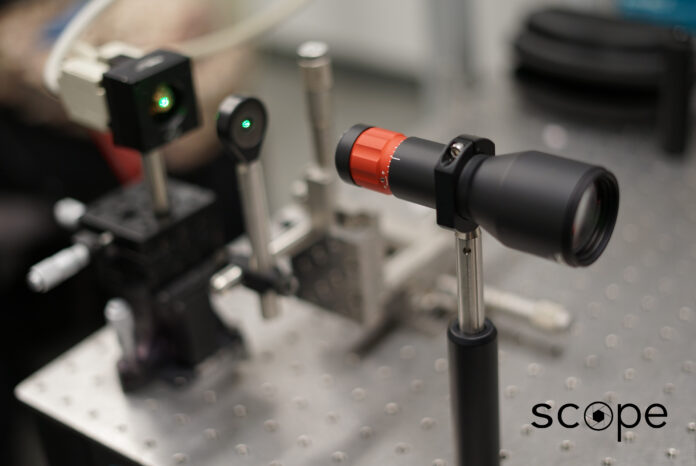The James Dyson Award (JDA) is an international award presented to talented design engineering students and recent graduates. Engineers from across the world present their designs for projects that address everyday challenges. On Sept. 17, 2020, the Canadian national winner and the two runners-up for the award were announced. One of the two runners-up is Sam Dugan, a Mechatronics student at UW. The other is a team of UW alumni, which includes Ishan Mishra, Holden Beggs, Zhen Le Cao, Fernando J. Peña Cantú and Alisha Bhanji, all recent Nanotechnology Engineering graduates. The winning team was from the University of British Columbia (UBC).
The team from UBC won based on their design for an Attentiv Catheter, a device that enables more efficient monitoring of IV injection and prevents any potential issues. Dugan, one of the runners-up, created a device called SmartPatrol which monitors blind spots on skiing terrain and places on the terrain where injury is common. Dugan is a passionate skier himself, and was inspired to create the device when he faced such problems himself.
“The SmartPatrol algorithm watches for any hazards that are present in the specified zone. Once a new hazard – skier, rider, or object – enters the zone, the algorithm tracks the hazard until it is safely beyond the specified zone. These hazards [range] from something large like a snowmobile to small hazards such as a BIC lighter,” Dugan said.
SmartPatrol acts like a traffic light and alerts the skier of such places as they are skiing. The light turns red when it is unsafe to complete a landing.
“The riders know that if the light is red, then the feature or area is not safe and that they should wait,” Dugan said.
Without SmartPatrol, skiers would have to use intuition and guesswork to determine if the landing is safe or not, which is not so easy to do with the speeds they are going at.
“Riders are hitting these jumps at speeds of more than 70 km an hour without being able to see whether there is a hazard waiting for them on the other side,” Dugan said.
Even with experienced skiers it is difficult to anticipate if another skier might be on the landing zone due to broken equipment or injury. With SmartPatrol, it is safe for both the oncoming skier and the one on the landing zone.
“Riders can now approach jumps confidently knowing that there are no hazards waiting for them on the other side of the jump. When they do fall, they have the piece of mind knowing that everyone uphill knows that they are still on the landing,” Dugan said.
SmartPatrol has come a long way, having had its first minimum variable product test on the hill at Mount St. Louis Moonstone. It started as a simple device, with duct tape stuck onto it for waterproofing. Now it has LTE, a removable battery, and collects statistics on any incidents it observes. It is also much faster with the new upgrades, using computer vision to analyse the terrain and accidents happening in real time. Dugan is anticipating the release of SmartPatrol Generation 3 by the next season, with all the aforementioned upgrades.
“[SmartPatrol] is being released with LTE connectivity alongside our new and improved web access portal to make more data available to the resorts,” Dugan said. “Currently the only alternative method of getting the real-time monitoring that the SmartPatrol provides is by placing staff members on each jump.”
Dugan mentioned that this device, although currently aimed towards monitoring skiing hazards, could be used to monitor other recreational sports.
“The SmartPatrol is currently being primarily marketed towards ski resorts for monitoring ski jumps in terrain parks, but development is also underway to adapt this system to snow tubing parks,” he said.
Other recreational sports that could be made safer by SmartPatrol include snow tubing, downhill bike trails, waterslides, golf courses, and snowmobile trail systems. Based on how the sport is played some changes to the software will be made, but overall SmartPatrol will not undergo a lot of changes. This technology can also use new Artificial Intelligence (AI) to improve sports monitoring and create newer AI algorithms.
“We have ambitious plans on how we can use better AI to help the SmartPatrol provide more value to the ski resorts. This platform is a great system for developing these new algorithms,” Dugan said.
Creating SmartPatrol was no easy feat – Dugan faced a number of difficulties when creating an algorithm and when figuring out what materials to use that could withstand unpleasant and rough conditions, such as find batteries that could survive and work efficiently at temperatures as low as -30 degrees celsius. Dugan and his team had to pick individual batteries and create a battery pack themselves.
On a similar note, another UW team that was also announced as Canadian runner-up designed a phone camera lens that addresses the real technological problem of zooming in. Scope is a lens that uses liquid crystals in a lens to prevent pixelation in the event of zooming while taking a picture.
“Our novel lenses allow for real continuous zoom, as opposed to the current solution which degrades the optical quality,” Alisha Bhanji, Chief Engineering Officer at Scope, said. “One of our lenses should be able to do what three of Apple’s current lenses do. This means that it takes up less space, requires less battery power and processing strength. This can allow for zoom with video and faster FPS (frames per second), which is currently very limited.”
Using liquid crystal in the lens allowed the team to create a lens that is tunable, meaning that changes in voltage can change the properties of the lens to the desired setting, while the lens itself remains small enough to fit in a smartphone.
“Here’s an analogy. Think of your glasses. When your eyesight gets stronger or weaker, you need to get a new prescription. The reason behind that is because the lenses in your glasses have a fixed optical power… we’re building lenses that don’t suffer from this limitation. With just an applied voltage, our lenses are able to change their behaviour. With our designs, we’d be able to leverage this property to be able to zoom without any moving parts, and therefore no natural loss in image quality,” Ishan Mishra, Chief Business Officer at Scope, said.
Once implemented in a smartphone, this lens will have no difference in the function of zooming in – you will still be pinching the screen.
“To the user, there won’t be any difference except for better photos,” Zhenle Cao, Chief Research Officer at Scope, said.
The creators of Scope developed their own Multiphysics module from scratch. A Multiphysics module is software that can be used to simulate designs in 2D and 3D. However, most Multiphysics modules like COMSOL cannot simulate liquid crystals.
“Our in-house multiphysics module can simulate the optics of liquid crystals, which is relatively difficult and isn’t available in most Multiphysics tools such as COMSOL. Our own module has let us model liquid crystal lenses with complex optical profiles, while also being able to solve optimization problems quickly. This is a lifesaver, as it means we are able to quickly iterate through designs at minimal cost and minimal risk,” Fernando Peña Cantú, Chief Technical Officer at Scope, said.
Scope will likely be a groundbreaking advancement for everyday photography, with its ease of use and improved image quality. Not only can the lens be used to improve phone-camera qualities, but it can eventually be used in other cameras.
“Beyond smartphone cameras, we think our technology could also be a game changer for several other big markets and products such as depth sensors, machine vision, microscopes, and more, and as such we’re truly very excited to see what the future has in store,” Holden Beggs, Chief Executive Officer at Scope, said.
Having good zoom is a constant problem faced by photographers. Some have to buy different lenses to improve their camera’s zoom. Jansher Saeed, a second year Political Science student at UW and an avid photographer who regularly takes pictures for Imprint, mentioned that although zoom-lenses are expensive, they capture a lower quality photo compared to normal lenses. With Scope this problem would be effectively addressed.
“Zoom lenses tend to be expensive compared to primes. Although zooms are very efficient, they aren’t as sharp and can limit creativity,” Saeed said. “While primes (or non-zooms) aren’t as efficient because you have no zoom [you would have to move to get closer], they are sharper and can boost creativity.”
Scope is an all encompassing upgrade on everyday cameras – it uses less power, has better zoom, and takes up less space.
“Current cell phone cameras utilize voice coil motors (VCM) to focus the lens and require three or more cameras to have a large zoom range. As a result, each camera can require more than 700 mW to operate. When recording simultaneously with multiple cameras (such as when zooming during video capture), this value can clearly balloon, resulting in the camera using up a very significant amount of power,” Cao said.
Currently, Scope is a prototype that has not yet been implemented on smartphones, but once it hits the market it is very likely to change how people take pictures.































